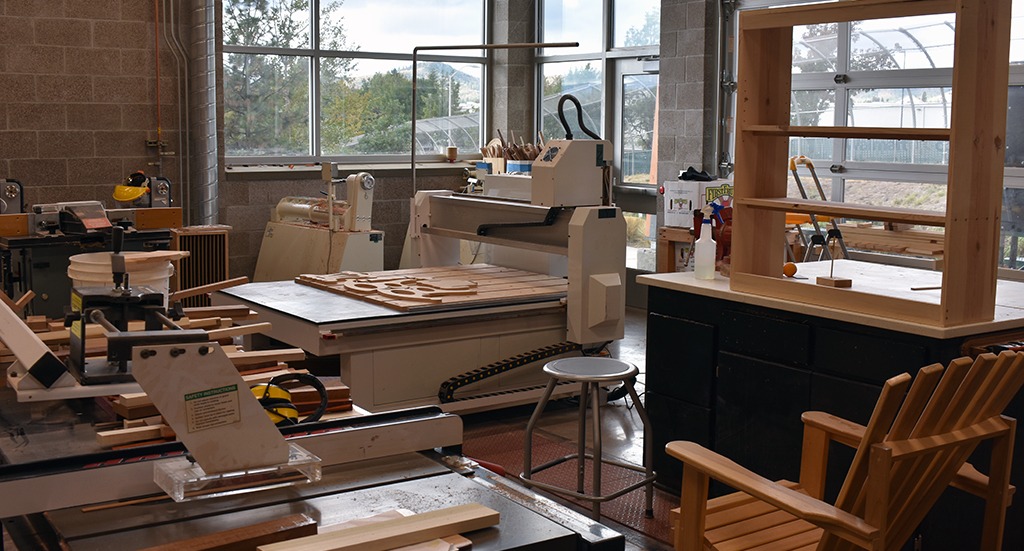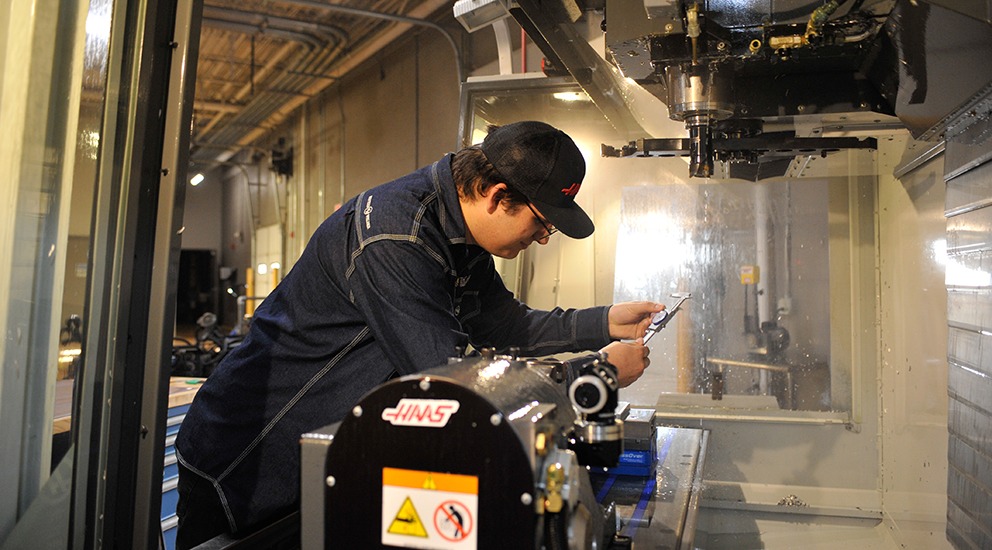
Community Program Uses Mastercam to Empower Local Residents
Instructor Warren Helgeson has dedicated his career to helping young men in the Rogue Valley Correctional Facility learn to be productive and happy members of society. His unique approach to teaching self-sufficiency and problem solving using Mastercam software has proven very successful.
Quick Facts:
- Product Used: Mill, Lathe
- Industry: Education

Project Details:
- The Challenge: Finding a way to teach not only manufacturing and machining to young men, but also critical thinking and problem-solving.
- The Solution: Design and manufacturing software from Mastercam.
- Benefits:
- Allows users to find creative solutions to problems
- Backplot and Verify let users experiment with toolpaths without damaging equipment
- Hands-on learning inspires students from all backgrounds
Warren Helgeson is an instructor at New Bridge High School’s Manufacturing Technology Lab in Grants Pass, Oregon. As an educator, his job is much like any other in the field—except for one thing. New Bridge provides structured education for the attendees of Rogue Valley Correctional Facility, and Helgeson helps to prepare young men for their eventual return to society.

The program encourages students to be critical thinkers and to experiment creatively, while also strengthening students’ math, English, science, direction-following, and trial and error skills. Helgeson believes that one of the most crucial skills for any successful adult is problem-solving. To teach that, he knew he needed the perfect tool. He found the solution in his CAD/CAM software.
“I think Mastercam is an incredible way of teaching problem solving, and I think that’s the most transferable skill for moving into any occupation,” he said. “Students are provided with a set of tools and a goal, and they have to figure out which tool to use to do each operation. Later in life, they’ll be presented with a different set of tools and different goals, but the process is the same.”
To illustrate his point, Helgeson uses Wireframe drafting as an example. The intuitive interface simplifies the powerful software so that any novice can learn quickly. Helgeson’s students practice dimensioning and designing within the Wireframe for a good portion of their time at New Bridge.
“We use it in a very traditional drafting format. We teach them where the tools are, what they do, how to use them. We ask them to get things to connect up, and to model what we show them.”
He first teaches his students to use the lettering feature to label components within their model to keep track of their progress and different sections. As they progress, Helgeson introduces the Level feature to overlay different models or to import artwork that his students can trace. Later, he invites them to call on that knowledge to design their own logos and signs. The most valuable feature, though, is the built-in simulation. Backplot and Verify functions simulate the entire machining environment: the tool, the tool holder, and the stock material. When using this modeling, Helgeson’s students are free to program to the extent of their creativity, finding out where their limits lie without ever damaging material.
“What really engages them is the opportunity to cut out a project on the CNC machine that they’ve designed all by themselves, and especially to teach that process to their peers. They don’t need to sit still and be lectured all day; they need to create with their own hands,” said Helgeson. One of his favorite projects is a children’s rocking chair that can be disassembled for transportation. He explained, “You can pull a pin in the back and take it all apart, and then putting it back together is a kind of puzzle.”

Helgeson originally obtained the basic plans from a local woodworking supplier and challenged a couple of students to figure out how to convert them to a CNC project. The young men laid out the plans on cardboard, took all the measurements, and transferred the data to the CAD/CAM software.
“They went from design to creation to product improvement in two weeks,” he recalled. “The first iteration had a few glitches, but by the third, they had a complete product that they wanted to keep improving even then.” The biggest obstacle for the team was perfecting the tight fits in the chair’s interlocking joints, a vital part of the process if the chair was to be disassembled and reassembled smoothly. Helgeson was especially grateful for the complication; he knew that achieving good fits is of major importance in any manufacturing career his students might pursue.
The software gave each of the students the opportunity to find their own solution. More students joined the project, adding cut-out shapes or redesigning the chair to fit an adult. Eventually Helgeson’s students even sold a few prototypes at an OAVNSP (Oregon Association of Vocational Special Needs Personnel) conference in Hood River, Oregon.

While his main concern is always inspiring his students to take their futures into their own hands, some of Helgeson graduates go on to Rogue Community College to earn their one-year CNC machining certification degree. He revealed that RCC’s program was another main reason that his students learn Mastercam; he wants his graduates to be familiar with the most widely-used CAD/CAM software in the machining industry, which is what RCC and most of the nearby shops use.
“We have a door manufacturer two blocks from here who has said that they want to hire someone with CAD experience. They’re willing to do in-house training with employees on their machinery, but that software training gets my students in the door,” he said. That final placement of a graduate in a permanent position cements the positive change that Helgeson and New Bridge facilitate.
Customer Quote
“I think Mastercam is an incredible way of teaching problem solving, and I think that’s the most transferable skill for moving into any occupation. Students are provided with a set of tools and a goal, and they have to figure out which tool to use to do each operation. Later in life, they’ll be presented with a different set of tools and different goals, but the process is the same.”
– Warren Helgeson, Teacher, New Bridge High School, Grants Pass, Oregon


